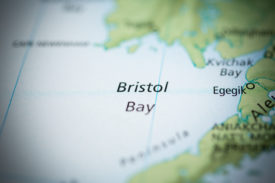 Backyard trees may not accomplish much, but forests soak up vast amounts of carbon. In fact, some people argue that trees and native plant communities may be one of our best remedies for climate emissions. Unfortunately, forests not only store a lot of carbon, they can also emit a lot carbon.
Backyard trees may not accomplish much, but forests soak up vast amounts of carbon. In fact, some people argue that trees and native plant communities may be one of our best remedies for climate emissions. Unfortunately, forests not only store a lot of carbon, they can also emit a lot carbon.
Take California’s redwood country, for example. Data from the North Coast Air Basin shows astonishing carbon emissions from a typical year of forest fires in just three counties. Enough, in fact, to equal 367,000 average American cars on the road. And this in a region with just 167,000 souls.
Here’s the down-low. Experts estimate that forest fires in Del Norte, Humboldt, and Trinity Counties were responsible for more than 1.8 million tons of carbon-dioxide over the decade from 1994 to 2003. Not only that, but fires kicked out more than 56,000 tons of methane, which is roughly 23 times as climate-potent as carbon-dioxide. All that adds up to nearly 2 million tons of carbon-dioxide-equivalent climate pollution. (Major hat tip to Lynn Jungwirth, who emailed me the data.)
Of course, the emisions from fires is really only half the story of forests. It’s debits, but not the credits. Northern California’s forests stored carbon during that period too (“sequestered” it, as they say in the biz). Just how much? Well, it’s hard to be certain. And that’s part of the problem.
As North America gets serious about climate change, there’s growing interest in understanding the role of forests (and land use change more generally). That’s as it should be. But we should also acknowledge the big uncertainties that are inherent in dynamic ecosystems.
One big risk is counting forest carbon storage as a plus—an “offset” to our emissions—but then not counting their emissions when they burn. We shouldn’t treat trees as permant carbon storage if, in fact, they’re not.
And in truth, at least as I understand the state of play, it’s very hard to know the extent to which forests are permanent carbon storage vehicles. In fact, some research suggests that climbing temperatures may turn big carbon sinks, like Pacific Northwest forests, into carbon sources.
Depending on how climate change plays out, hotter (and drier and longer) summers could lead to more wildfires, and therefore more emissions. Spreading forest pests, probably linked to warmer winters, can kill vast tracts of forest, simultaneously reducing carbon uptake and increasing susceptibility to fires and logging.
So before we start banking on forests to do our climate work for us, we need to get serious about answering some quesions. Do forests permanently store carbon? And, if so, how can we verifiy the amount (and changes to the amount over time)?
Surely afforestation adds to the world’s carbon storage, but what about a mature forest? Is it a carbon sink, a source, or a steady state?
Now, I’m not saying that the right solution to ignore forests. Not at all. The questions I’m posing all have answers. We just need to figure out what they are.
Timely update, 2/13: In yesterday’s throne speech, BC premier Gordon Campbell announced that the province will use forest offsets to help address climate emissions. The Vancouver Sunarticle is pretty short on details, but it sounds like the offsets would come mostly from afforestation projects.








JoshMahar
I think this points out that we can’t rely on other species to limit our carbon emissions for us. Its up to humans to dramatically change the way we understand “quality living” for things to really start heading in the right direction.Also, aren’t many of the big forest fires these days due to poor planting practices by logging companies in the first place?
Dan
First, trees don’t “cause” pollution by burning, as this is already part of the natural carbon cycle. You want to focus on the “unnatural” part of the carbon cycle, the causes of the rise of atmospheric CO2 ppmv above ~285 ppmv: our land-use practices, cheap energy driving society, population growth, crazy consumption…IOW, I = PATSecond, and I brought this up here before in your ‘some research’ link, is that the problem with planting trees to make yourself feel good is: what is a carbon storage ton ? When is it a ton? When does it become a credit? For how long is it a ton (e.g., too long a warming season and metabolic maintenance actually emits carbon via respiration)? Is a 2×4 a net storage credit after emissions from logging & milling? Why not?This is not to throw cold water on your fire, Eric, but we have a lot to talk about in a short time. We need to be asking these questions, and keep asking them, sir.
Matt the Engineer
I think the time factor is very important right now. I think a motivated mankind can all but stop carbon emissions on the timescale of 200 years. But in the shorter term we continue to pour massivie amounts of greenhouse gasses into the sky. Would building a new forest sequester carbon forever? Not unless you protect it forever. But I think the case can be made that even a timber forest can sequester carbon while the trees grow, then for another good hundred years as finished lumber. And that’s the time scale where we need the most help.
Eric de Place
Hey, for the record, Dan, my title was just a little riff on Ronnie Reagan’s claim circa 1981 that “trees cause more pollution than automobiles.” Anyway, I completely agree thta the questions you’ve posed are good ones. I don’t think we have anywhere like sufficient answers yet.
harry
Hi EricWhat about the carbon that is stored in the wood used to build homes. Many homes last over a hundred years and some wood is recycled. Using wood as an alternative to steel or concreet also reduces an enormous amount of atmospheric carbon contribution that results from the energy used to manufacture these building materials. Of course, this requires cutting trees, and maybe even active forest management, which may not fit many peoples agendas.HB
Bob Zybach
Over time, forests are essentially “carbon neutral.” That is, all of the carbon they sequester is ultimately burned or rotted back into the atmosphere.Forest products allow additional sequestered carbon to be released into the atmosphere, but it greatly depends upon whether the products are pulp, home siding, furniture, or violins.If forest products are used for energy production, however, in the traditional forms of firewood, or to generate electricity or produce ethanol, then they can be used instead of fossil fuels. Carbon is still released back into the atmosphere, but it is renewable carbon, rather than stored carbon.Active management of forests is key. Forest fires should be unacceptable alternatives to wise use of these critical resources.